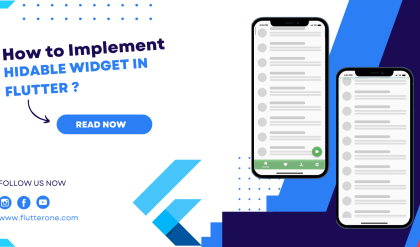Introduction
Flutter is an open-source UI framework developed by Google. It allows developers to create cross-platform applications for mobile, web, and desktop using a single codebase. Flutter follows a reactive and declarative programming model, which means that the user interface is built using widgets.
What are Widgets?
In Flutter, everything is a widget. Widgets are the fundamental building blocks of a Flutter application, representing different elements of the user interface. Each widget is responsible for declaring a part of the UI and managing its own appearance and behavior. Widgets can be simple, like displaying text or images, or they can be complex, like forms, lists, or animations.
Anatomy of a Widget
Widgets in Flutter have properties that define their behavior and appearance. For example, the Text widget is used to display static or dynamic text, and it has a style property for defining the font size, color, and other text styles.
Here’s an example of a stateless widget that displays a simple text:
import 'package:flutter/material.dart';
class MyTextWidget extends StatelessWidget {
@override
Widget build(BuildContext context) {
return Text(
'Hello, Flutter!',
style: TextStyle(fontSize: 20),
);
}
}
Working with Stateful Widgets
Stateful widgets are used when the UI needs to change dynamically based on user interactions or other factors. These widgets manage their own state, allowing updates to be reflected in the UI. Stateful widgets have lifecycle methods, such as initState, didChangeDependencies, setState, and dispose, which control the state and behavior of the widget.
Here’s an example of a stateful widget with a button that increments a counter:
import 'package:flutter/material.dart';
class MyButtonWidget extends StatefulWidget {
@override
_MyButtonWidgetState createState() => _MyButtonWidgetState();
}
class _MyButtonWidgetState extends State<MyButtonWidget> {
int _counter = 0;
void _incrementCounter() {
setState(() {
_counter++;
});
}
@override
Widget build(BuildContext context) {
return Column(
children: [
Text(
'Counter: $_counter',
style: TextStyle(fontSize: 20),
),
RaisedButton(
child: Text('Increment'),
onPressed: _incrementCounter,
),
],
);
}
}
Exploring Core Flutter Widgets
Flutter provides a rich set of pre-built widgets that cover a wide range of UI elements and interactions. These widgets can be easily customized and composed to create complex user interfaces. Here are some core Flutter widgets:
- Text Widget: Displaying static and dynamic text.
- Image Widget: Loading and displaying images from various sources.
- Button Widgets: FlatButton, RaisedButton, and InkWell for handling user interactions.
- Input Widgets: TextField, TextFormField, and others for capturing user input.
- Container Widget: Managing layout and styling of UI elements.
- ListView and GridView: Building scrollable lists and grids.
Here’s an example of using the Container widget to create a styled container:
import 'package:flutter/material.dart';
class MyContainerWidget extends StatelessWidget {
@override
Widget build(BuildContext context) {
return Container(
width: 200,
height: 200,
color: Colors.blue,
child: Center(
child: Text(
'My Container',
style: TextStyle(fontSize: 24, color: Colors.white),
),
),
);
}
}
Conclusion
Flutter’s widget-based approach offers a powerful and flexible way to build user interfaces. By understanding the core concepts of widgets and exploring the available Flutter widgets, you can create stunning and interactive UIs for your applications.
These code examples provide a glimpse into the usage of different Flutter widgets. They demonstrate the simplicity and expressiveness of Flutter’s syntax while showcasing the power of widget composition and state management.
Remember, these examples serve as a starting point, and there are many more widgets and features to explore in the Flutter framework. Happy coding!






